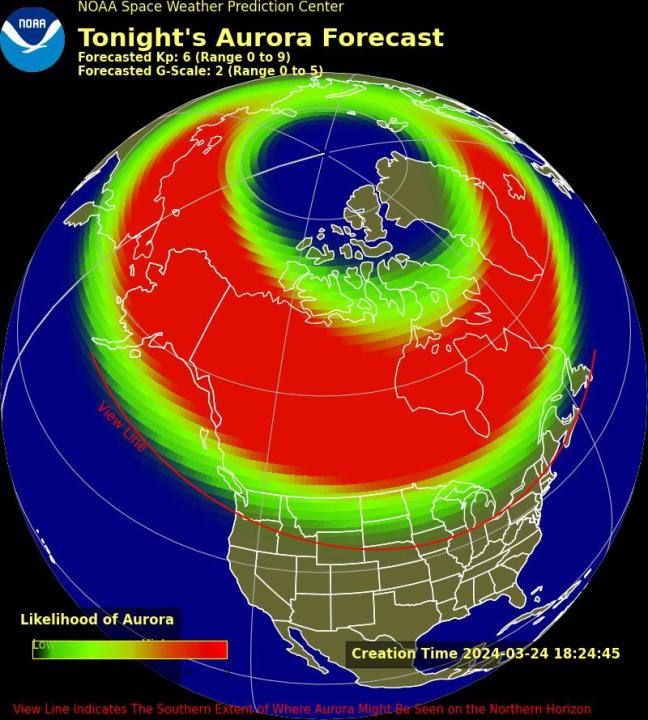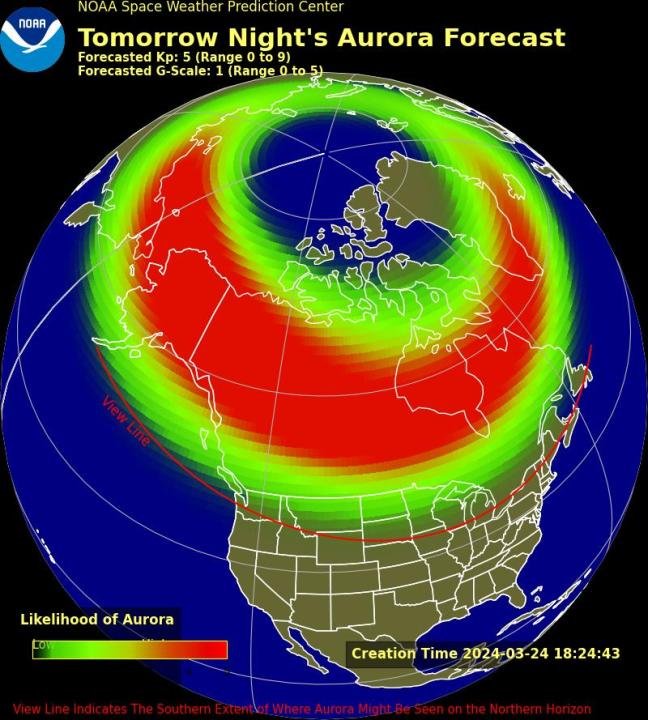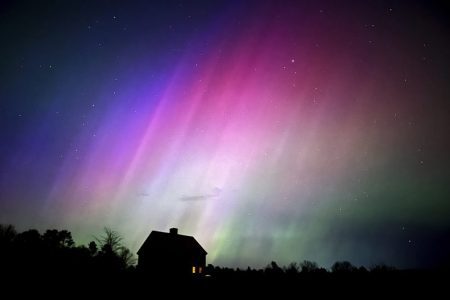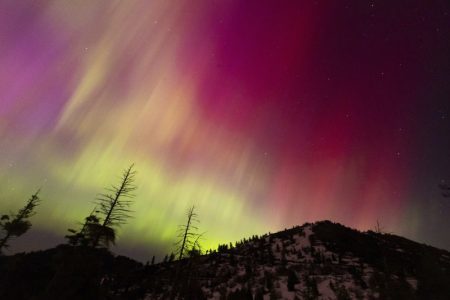A significant geomagnetic storm is affecting Earth, according to the NOAA Space Weather Prediction Center (SWPC) on Sunday. However, the U.S. may not witness the auroras typically linked to such events.
The SWPC issued geomagnetic storm watches until Monday due to an approaching coronal mass ejection. Initially, the agency indicated that the geomagnetic storms could reach G2 “moderate” and G3 “strong” levels.
However, on Sunday, the SWPC cautioned that the storm has intensified to “severe” G4 conditions.
Here’s what we know:
What is a coronal mass ejection?
A coronal mass ejection, or CME, is an explosion of plasma and magnetic material from the sun that can reach Earth in as little as 15 to 18 hours, NOAA explains. According to NASA, CMEs can create currents in Earth’s magnetic fields that send particles to the North and South Poles. When those particles interact with oxygen and nitrogen, they can create the northern lights.
“It’s essentially the Sun shooting a magnet out into space,” Bill Murtagh, program coordinator for the SWPC and seasoned space weather forecaster, previously told Nexstar. “That magnet impacts Earth’s magnetic field and we get this big interaction.”
That interaction is known as a geomagnetic storm, the strength of which will impact how far south the northern lights will be visible.
How are geomagnetic storms measured?
The SWPC uses a 5-point scale to measure the strength of geomagnetic storms, much like forecasters use scales for tornadoes and hurricanes.
The geomagnetic storm scale ranges from G1 to G5. At the lowest end is G1, described as minor storms that can lead to aurora being visible in Maine and Michigan’s Upper Peninsula. A G5 storm, described as extreme, could send the northern lights as far south as Florida and southern Texas.
Geomagnetic storms can also impact our navigation, communication and radio signals. When major solar activity is seen, the SWPC issues an alert, Dr. Delores Knipp, a research professor in the Ann and H.J. Smead Aerospace Engineering Sciences Department at the University of Colorado Boulder, previously told Nexstar. This warns those using high-frequency radios (like emergency managers), airlines, and those in charge of our electrical grid of the possible impacts on our communication systems, GPS, and electricity.
A G1 storm can have minor impacts on the power grid, satellite operations, and migratory animals. A much larger storm can knock out satellites, communications, and power grids.
How serious is this storm?
The SWPC notes that geomagnetic storming reaching G4 conditions has been reported and is expected to continue into Monday.
The G4 storming observed Sunday is considered “severe,” the SWPC notes, saying a storm of this caliber is “a major disturbance in Earth’s magnetic field; often varying intensity between lower levels and severe storm conditions over the course of the event.” As alarming as it may sound, the agency is advising otherwise.
“The public should not anticipate adverse impacts and no action is necessary, but they should stay properly informed of storm progression by visiting our webpage,” the SWPC stated in an update on Sunday, adding that infrastructure operators have been informed to take action to lessen any potential impacts.
Officials also mentioned that there could be more frequent problems with controlling voltage, which are usually manageable; a higher possibility of unusual or harmful effects to satellite operations; and a greater chance of more frequent and longer periods of GPS degradation.
Will the aurora borealis be visible in the northern hemisphere?
Unfortunately, the strong solar activity mentioned on Sunday afternoon is occurring during the daytime in the United States. The SWPC’s current forecast models indicate that people in northern Europe and Asia may witness some aurora, but it may not hold true for the U.S.
“It is possible that the optimal conditions will go to waste in the United States because it’s still daytime,” said Eric Snitil, chief meteorologist at Nexstar’s WROC. at Nexstar’s WROC said. However, if the geomagnetic storm remains strong into the night, the chances of viewing the auroras could improve.
A G4 storm would typically mean that individuals in states as far south as Alabama and northern California could observe the northern lights.
“In short, we are now playing a waiting game. People on the opposite side of the world are in for a real treat over the next few hours. We will have to wait and see if this display will continue beyond nightfall locally,” he added.
As of 2:30 p.m. ET, the SWPC’s forecast indicates that individuals in the northern U.S. might still see the auroras on Sunday and Monday night. The latter forecast could change by Monday morning.


If you don’t get to see the northern lights on Sunday, have no fear — we’ll likely have another opportunity soon.
According to NOAA, we’re approaching the peak of Solar Cycle 25, an 11-year period during which it reverses its north and south poles. During this period, various space weather events can occur, bringing geomagnetic storms — and the northern lights — to Earth.









